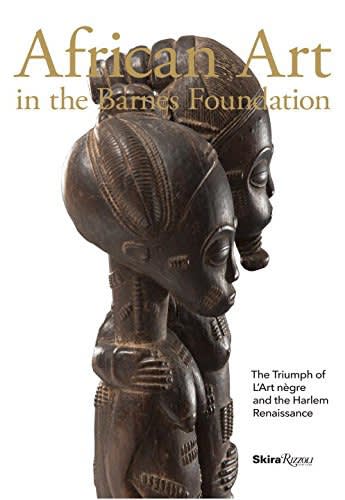
To be published by Skira Rizzoli end of May, African Art in the Barnes Foundation: The Triumph of L’Art Negre and the Harlem Renaissance, edited by Christa Clarke (senior curator of Arts of Global Africa at the Newark Museum, New Jersey) and with contributions of Arthur Bourgeois, Nichole Bridges, Kevin Dumouchelle and Kate Ezra, is the first publication of the Barnes Foundation’s important and extensive African art collection. I had already written about their holdings last year here, so I’m very happy to learn about the upcoming monograph dedicated to this special collection.
The Barnes Foundation is renowned for its astonishing collection of Postimpressionist and early Modern art assembled by Albert C. Barnes, a Philadelphia pharmaceutical entrepreneur. Less known is the pioneering collection of African sculpture that Barnes acquired between 1922 and 1924, mainly from Paul Guillaume, the Paris-based dealer. The Barnes Foundation was one of the first permanent installations in the United States to present objects from Africa as fine art. Indeed, the African collection is central to understanding Barnes’s socially progressive vision for his foundation.This comprehensive volume showcases all 123 objects, including reliquary figures, masks, and utensils, most of which originated in France’s African colonies—Mali, Côte d’Ivoire, Gabon, and the Congo—as well as in Sierra Leone, Republic of Benin, and Nigeria. Christa Clarke considers the significance of the collection and Barnes’s role in the Harlem Renaissance and in fostering broader appreciation of African art in the twentieth century. In-depth catalog entries by noted scholars in the field complete the volume.
A unique aspect that makes this collection art-historically important is the very short timespan in which it was acquired, more specifically between 1922 and 1924. One thus gets a very good idea of what was available right then. In retrospect it is easy to state that the quality or authenticity of some of the objects is questionable, but one should be aware of the limited knowledge on the subject available then and the pioneering role of Albert C. Barnes assembling these artworks.


